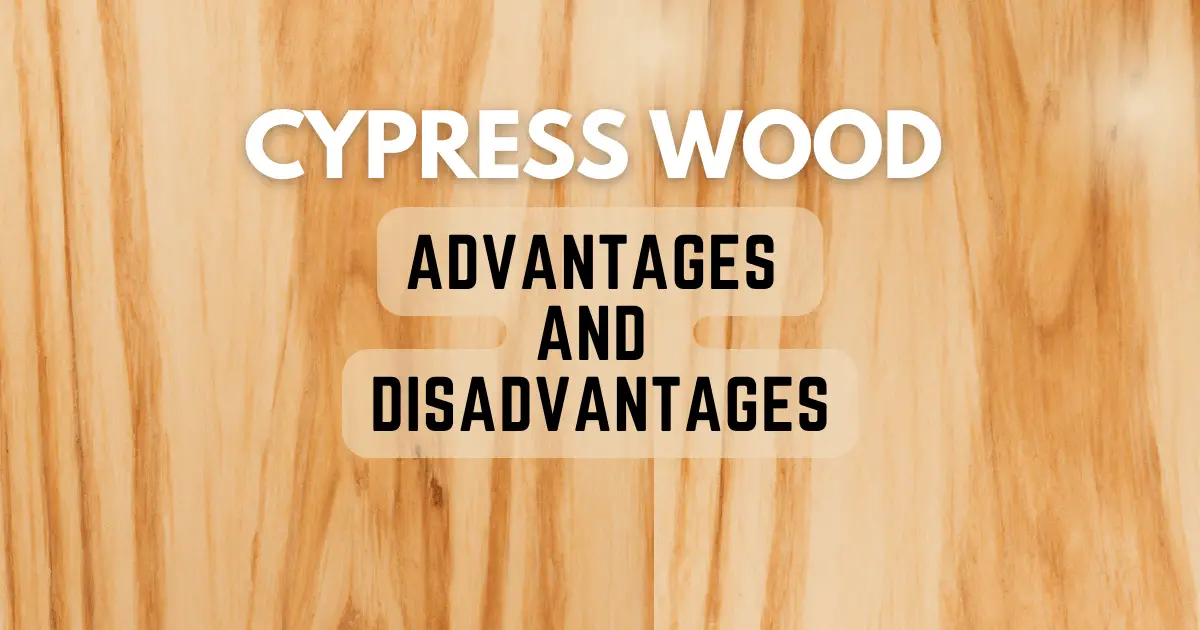What is Cypress Wood?
Cypress is a durable, stable and rot-resistant softwood. It is often used for outdoor and indoor applications such as decking, fencing, building and heavy construction, and siding. Cypress trees are native to the southeastern United States and are grown in a variety of regions around the world.
Cypress wood can be light and yellowish-brown, and the sapwood (outer layer of the branch) is nearly white. It has a straight grain with a medium to coarse texture.
Advantages and Disadvantages of Cypress Wood
As we all know, each wood species has advantages and disadvantages, so before using wood, you should know about its characteristics.
Advantages
Durability
Cypress wood is very durable and stable because it is naturally resistant to rot and decay, making it a durable choice for outdoor projects. It is also resistant to insect attacks.
Water resistance
Cypress wood has a natural resistance to moisture, making it an excellent choice for all those projects that may be exposed to humidity or water. It is often used for outdoor furniture, decks and floors.
Appearance
Cypress wood has a unique light, a yellowish-brown color used to make high-quality furniture. It is often used in decorative projects such as trim work.
Easy to work
Cypress wood is relatively easy to work with hand and machine tools, but sharp tools are recommended. Cypress readily accepts paints and stains and can quickly cut shapes and finish.
Sustainability
Cypress wood is sustainable and not listed in the CITES Appendices. It is a more environmentally friendly choice compared to some other types of wood.
Disadvantages
Cost
Cypress wood can be expensive compared to other types of wood because it has a slow growth rate and is in high demand. Its price may be less at the native location of the cypress.
Availability
Cypress wood is less available than other types of wood, making it more difficult to find in some regions. This may also contribute to its higher cost.
Dents and Scratch
Cypress is low-density wood, so it is highly prone to dents and scratches compared to other wood. Cypress wood has a Janka hardness rating of 510 lbf (pound-force).
Toxic
Cypress has been reported as a sensitizer, which may cause respiratory problems when working with it.
Change color
Cypress wood requires regular staining because it fades to a silvery grey within a few years. Stain protects the natural color from the elements.
FAQs
Does Cypress Wood Rot?
Cypress wood is naturally resistant to rot and decay due to its high content of cypressene. Cypressene is a natural oil in cypress wood that acts as a natural preservative. However, if the wood is not properly sealed and maintained, it can rot due to prolonged exposure to moisture or weather.
Can You Paint or Stain Cypress Wood?
Yes, Cypress wood is easy to paint or stain. Before painting or staining cypress wood, it is important to thoroughly clean and prepare the surface by removing any dirt, debris or mildew.
Does Cypress Wood Need to be Treated?
Although cypress wood is durable and stable, it does not require treatment for general purposes such as indoor furniture. But treated cypress is recommended for outdoor use.

